#Floyd Patterson
Explore tagged Tumblr posts
Text

Muhammad Ali | Floyd Patterson | The Loneliest Sport
45 notes
·
View notes
Text



9 notes
·
View notes
Text

#professional boxing#black excellence#black archives#boxing#muhammad ali#floyd patterson#jack dempsey#joe louis#joe frazier#jersey joe walcott
75 notes
·
View notes
Text

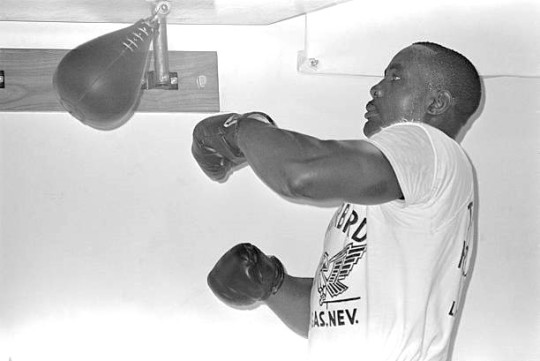
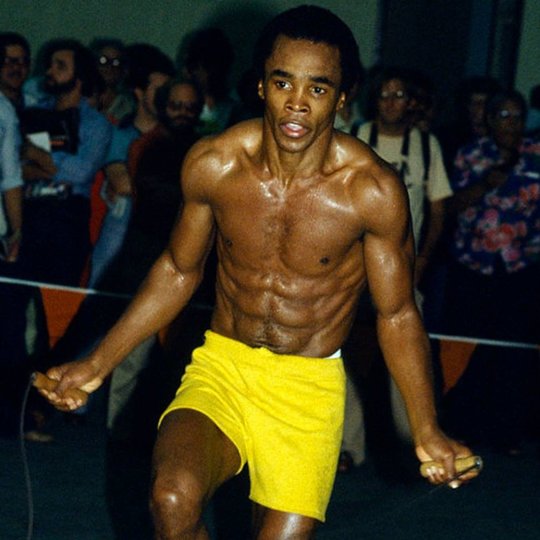
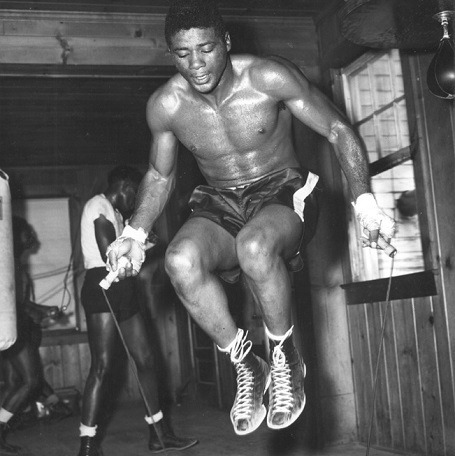

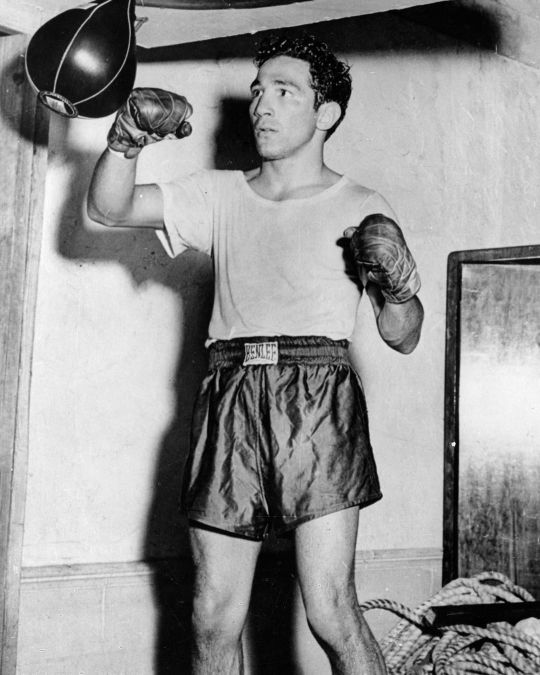


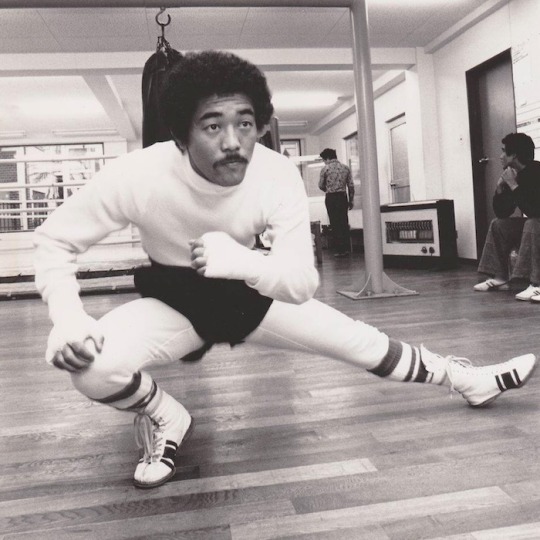
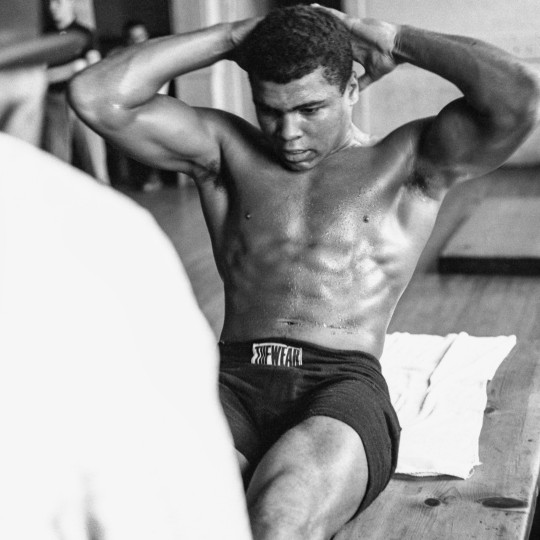
BOXING IMMORTALS: IN TRAINING
#muhammad ali#jack dempsey#yoko gushiken#willie pep#dick tiger#floyd patterson#ezzard charles#sonny liston#sugar ray leonard#rocky marciano
18 notes
·
View notes
Text

Less than a year after their first big fight.
https://www.esquire.com/sports/a45515/muhammad-ali-in-defense-of-cassius-clay/
2 notes
·
View notes
Text

Carl Fischer, "The Loser" (Floyd Patterson), Esquire, 1964
1 note
·
View note
Video
youtube
Console Sports Games of 1993 - Greatest Heavyweights
Greatest Heavyweights is a 1993 Sega Genesis exclusive licenced boxing game developed by Acme Interactive and published by SEGA. The game features former heavyweight champions Evander Holyfield, Larry Holmes, Joe Frazier, Muhammad Ali, Floyd Patterson, Rocky Marciano, Joe Louis and Jack Dempsey with likenesses and fighting styles of each of the fighters replicated in the game (to the best that was possible in 1993).
The game itself however is not a brand new title, it is however an enhanced version of a previously Acme developed and released game in 1992s Evander Holyfield's "Real Deal" Boxing.
Greatest Heavyweights offers three game modes to choose from and Exhibition mode an 8 man tournament mode and a career mode. the latter has the player create a character and fight their way up a 30 fighter rankings, once the player is ranked number 1 they will be challenged by the eight previously mentioned former champions.
1. Intro 00:00
2. Games Intro 00:15
3. Gameplay 01:04
4. Outro 11:25
Twitter (Gaming & AI Art)
https://twitter.com/zero2zedGaming
Instagram (AI Art)
https://www.instagram.com/random_art_ai/
For more sports game videos check out the playlists below
Console Sports Games of 1993
https://www.youtube.com/playlist?list=PLFJOZYl1h1CEhIf6hohng9T2IPLCpzn7o
#youtube#greatest heavyweights#boxing#fighting#sport#sports#fighting games#90s games#90s gaming#video games#evander holyfield#larry holmes#joe frazier#muhammed ali#floyd patterson#rocky marciano#joe louis#jack dempsey#sega genesis#genesis#Evander Holyfield's Real Deal Boxing#enhanced version
0 notes
Video
youtube
Floyd Patterson | The Original Mike Tyson
#youtube#Boxing#floyd patterson#Sonny Liston#Muhammad Ali#sports#the sweet science#cus damato#Mike Tyson#Rocky Marciano#introvert#peek a boo boxing style#rainy day boxing#ingemar johansson#brooklyn ny#brooklyn nyc
0 notes
Text
Sonny Liston Appreciation
(adsbygoogle = window.adsbygoogle || []).push({});
By Sina Latif
Follow @Frontproofmedia!function(d,s,id){var js,fjs=d.getElementsByTagName(s)[0],p=/^http:/.test(d.location)?'http':'https';if(!d.getElementById(id))(document, 'script', 'twitter-wjs');
Published: May 08, 2023
"The world doesn’t always need a white knight. Sometimes it needs something darker." -- Doctor Fate, Black Adam
Arguably the most feared and intimidating fighter in history, "The Big Bear" Sonny Liston, by Muhammad Ali's own admission, was the scariest man The Greatest ever faced.
He is frequently remembered as the man who catapulted Ali's rise to superstardom. Liston was so much more. He might be the most underrated heavyweight champion in history—one of the most ferocious men ever to set foot inside a professional boxing ring.
The name Sonny Liston has become synonymous with his discouraging performances against Ali. However, Liston was in his prime long before he fought Ali, and arguably even before his first world title shot in 1962 against Floyd Patterson. Liston's two early KO wins against Cleveland "Big Cat" Williams, and a third-round knockout over Zora Folley in 1959 and 1960 were deemed to be vicious exhibitions of heavyweight ferocity and power. This was Liston at his most devastating and in his prime. Not one to be willingly granted a world title shot, Liston took the long route, dismantling all the top contenders of his era to force his shot. By the time he received his opportunity, although clearly still a very ferocious fighter, he was arguably no longer at his peak.
Liston went from humble beginnings to become one of the greatest heavyweights of all time, building his reputation through pure frightening intimidation, vicious and swift knockouts, with fists harder than bricks. At 15 inches, Liston had the largest fists in heavyweight history, so large he had to have custom-made gloves. Liston used his ramrod jab behind his 84-inch reach to pressure his opponents.
Physically he was immensely strong, a natural puncher, and had a rock-solid chin. He could slip and slide, cut off the ring, and bang with both hands. Liston had "that feeling left and that slaughterhouse right," as biographer Nick Tosches described. However, Liston could also box. He wasn't just a hard-hitting monster. Liston was a born fighter. He could keep the pressure on without getting wild and careless.
His menacing stare during the pre-fight head-to-head in the middle of the ring would have opponents quaking in their boots, seriously questioning their presence in the ring with this mean, hard-hitting force.
Liston does not merely defeat his opponents," Jonathan Eig wrote of the fighter. "He breaks them, shames them, haunts them, leaving them flinching from his punches in their dreams."
The 24th of 25 children, born into a large and poverty-stricken sharecropping family in Arkansas, Charles' Sonny' Liston's precise date of birth remains unknown, as does the exact date for his death.
"We grew up like heathens," Sonny said. "When I was a kid I had nothing but a lot of brothers and sisters, a helpless mother, and a father who didn't care about a single one of us."
Liston was savagely beaten on a consistent basis by his father, Tobe, while growing up, with permanent scars on his back to show. Sonny was quoted once as saying: 'The only thing my old man ever gave me was a beating.'
Sonny was always on the wrong side of the law throughout his life, and once sentenced on June 1, 1950, to five years in the Missouri State Penitentiary, a ring legend was produced. Despite being a merciless criminal and illiterate, Liston met two men who changed his life, the prison's athletic director, Catholic priest Father Edward Schlattmann, and his successor, Reverend Alois Stevens. Liston was released from prison on parole after two years, but during this two-year stretch, he was introduced to boxing, which turned out to be a blessing in disguise.
Reverend Stevens told Sports Illustrated: "He was the most perfect specimen of manhood I had ever seen. Powerful arms, big shoulders. Pretty soon he was knocking out everybody in the gym. His hands were so large! I couldn't believe it. They always had trouble with his gloves, trouble getting them on when his hands were wrapped."
Upon Liston's early release from prison on October 31, 1952, due to his commitments to boxing in prison, the organized crime bosses, who were still big players in the boxing world, took a keen interest in the ex-con heavyweight. Liston hooked up with mobster John Vitale, who became his manager. Liston's employment went beyond boxing. He was used as a debt collector and mob enforcer.
Once Liston's professional career was in full flow, history was created, and a blaze of destruction was left behind.
During a three-year spell between 1959 and 1962, Liston blitzed through all of the heavyweight contenders to get a crack at the champion, Patterson, then became the first man to become a world heavyweight champion via a first-round knockout. No man had ever knocked out another heavyweight champion in the first round twice, which Liston accomplished in the rematch.
At this point, it appeared like there was no human on the planet that could stand up to Liston. Liston, at this stage, was a truly magnificent and devastating fighter, one of the absolute greatest heavyweights of all time. He was regarded as the greatest heavyweight since Joe Louis. Some boxing insiders even thought of him as greater than Louis and the greatest of them all.
In the early '60s, Liston was to boxing what Mike Tyson became in the late '80s.
Opponents were often terrified and had lost the fight before a single punch had been thrown against Tyson. Tyson had an aura that brought him the worldwide moniker of "The Baddest man On The Planet". However, the Original Baddest Man On The Planet, the pioneer of this aura and Tyson's idol, was Liston.
The likes of George Foreman and Tyson definitely made use of the art of intimidation, but Liston was the real originator. There were no real attempts by Liston to be intimidating. It was simply in his nature.
Ali faced some formidable hitters during his career, the likes of Joe Frazier, Foreman, Ron Lyle, and Earnie Shavers, yet he said the following about Liston: "Of all the men I fought in boxing, Sonny Liston was the scariest."
Foreman once said: "Sonny Liston was the first role model I had. No doubt the scariest human being I've met in the ring, the only man to make me back up consistently."
Shortly after Liston's back-to-back demolitions of Patterson, a 22-year-old, soon to be known as 'The Louisville Lip,' harassed Liston for a title shot. Cassius Clay had won Olympic gold as a light heavyweight at the 1960 Olympics in Rome, finished his amateur career with a record of 100-5, and was 19-0 as a professional. However, Clay was no stranger to touching the canvas. In fact, a left hook from Henry Cooper had floored Clay in his most recent fight, with Clay's trainer Angelo Dundee buying him time to recover in the young American's biggest scare thus far. If Cooper could hurt Clay, what would a destroyer like Liston do to him? Nevertheless, the youngster had created enough hype to land the fight, and on February 25, 1964, the pair faced off at the Miami Beach Convention Center.
Liston weighed in at 218 lbs, seven and a half pounds heavier than his challenger. Little did the champion and the world know this young, brash, undefeated challenger would go on to become the greatest heavyweight of all time.
Liston quit on his stool after round six, citing a shoulder injury.
The stone-faced Liston was a bad man, but perhaps upon reflection, the writing was on the wall. His three previous fights were all first-round knockouts, meaning he had fought less than nine minutes in three years. He was not prepared for a long fight. Liston had predicted an early knockout, as had become custom for him. Once this was not achieved, he started to unravel. Meanwhile, Clay and trainer Angelo Dundee had studied films of Liston and prepared hard.
Liston and the now-Muhammad Ali fought a year later, and this result was even more disappointing. Liston was floored and stopped with the infamous "Phantom Punch" in the first round, and it seemed the former champion's career was over. He had 15 more fights before concluding his career against 'The Real Rocky,' Chuck Wepner, in June 1970.
In late 1970, Liston was found dead in his home—a sad and bizarre ending to a troubled life.
Liston would have been more appreciated in today's boxing. There was no place for him when he was active. He was never embraced by the public, and that hurt him deeply, with the scars hidden behind a mean scowl. In today's boxing, when the bad guy is appreciated, Liston would have been a superstar.
The extent to which Liston was appreciated in his day is irrelevant to his standing today. He was one of the greatest fighters to ever lace a pair of professional boxing gloves, and there will never be another like him.
(Featured Photo: Stanley Weston/Getty Images)
1 note
·
View note
Text
Saturday Night Showcase> Dean Martin Roasts Muhammad Ali
BW Media Spotlight's Saturday Night Showcase> Dean Martin Roasts Muhammad Ali
Born Cassius Clay before converting to Islam, Muhammad Ali would refer to himself as “the greatest” and he certainly worked hard to back that up. Olympic gold medalist, multiple time boxing champion, and once fought a depowered Superman in the comics, Ali could be controversial but it takes a lot of guts to say something bad about him to his face. Or appear on Dean Martin’s Celebrity Roast. Born…

View On WordPress
#Billy Crystal#Charlie Callas#Dean Martin#Dean Martin&039;s Celebrity Roasts#Floyd Patterson#Foster Brooks#Freddie Prinze#Gabe Kaplan#Gene Kelly#Georgia Engel#Howard Cosell#Isabel Sanford#Muhammad Ali#Nipsey Russell#Orson Wells#Red Buttons#Rocky Graziano#Ruth Buzzi#Saturday Night Showcase#Sherman Hemsley#Tony Orlando#Wilt Chamberlain
0 notes
Text

Dopo The Silent Enigma gli Anathema decidono di spogliarsi dell’aggressività ma non della malinconia; abbandonano il cantato in growl e quelle consuetudini più vicine al death metal delle origini per convogliare la loro tristezza e cupezza di fondo in un nuovo modo di fare metal. Certo, i colleghi connazionali My Dying Bride e Paradise Lost avevano già tracciato i solchi sui quali i Cavanagh (ma soprattutto Patterson) sarebbero passati, ma solo in parte, per poi prendere una strada del tutto personale più vicino ad un songwriting chitarristico che guarderà continuamente e sempre più spesso a David Gilmour. I fischi della chitarra, gli echi lunghi, quel suono come il canto delle balene in Eternity avvolge ancora i cimiteri e zone crepuscolari. Ma non mancano i raggi di sole in questo album, forse quelli più pensierosi del tramonto anche se in realtà la discografia degli Anathema da questo momento in poi sarà sempre più fatta di momenti di luce.

In questo memorabile momento di passaggio sono stati composti brani classici come "Angelica", entrato nell’immaginario della band assieme a "A Dying Wish" e ad altri. Eternity è, chiaramente ancora un album di passaggio che però non soffre né del fatto di essere più leggero rispetto a The Silent Enigma né di essere più forte (e per certi versi più acerbo) rispetto successivo e già più classico Alternative 4. "The Beloved" sembra già appartenere a quel mondo di rock bastardo fatto di aggressività al punto giusto che ascolteremo ancora diverse volte nell’album successivo. Il trittico Eternity sviscera il formato degli Anathema di questi anni: chitarre acustiche, arpeggi, batteria che segna i diversi climax durante i brani, con la voce che modula perfettamente questa giovane teatralità che è fatta di aggressività e disperazione. La seconda parte è un dialogo fra chitarre, piano e basso; un interludio che ha formato tanti giovani chitarristi nel trovare un loro linguaggio, una confidenza col loro strumento (mi ricordo tanti pomeriggi nei primissimi anni 2000 che cercavo di emettere suoni psichedelici così quando ancora ero un acerbo chitarrista metal). "Hope" (cover di Roy Harper su musiche, appunto di Gilmour) segna una linea di demarcazione fra le influenze di ieri e quelle di oggi e di domani, anche se il prodotto è ancora abrasivo, disperato e perfettamente inquadrato nel resto dell’album. "Suicide Veil" anticipa i tempi di Judgement e "Radiance" quelli di A Fine Day to Exit anche se la dolcezza sarà un ingrediente che gli Anathema faranno loro successivamente. La terza parte di Eternity chiude a sua volta quello che potrebbe essere un bellissimo omonimo EP che definisca la nuova identità di questa incredibile band che è stata capace di ritagliarsi credibilità e accondiscendenza perfino nel panorama più intransigente degli ascoltatori death/doom. Ma d’altronde la classe, in casa Anathema, non è mai stata acqua.


0 notes
Text
youtube
This is from Uno's other promotion, alongside Mystery Wrestling
#dexter doom#ed bellows#evan rivers#karl jepson#gabriel fuerza#alexia nicole#james stone#vanessa kraven#cecil nyx#gabriel floyd#raja ali#zak patterson#andrew love#thomas leduc#tdt#tabarnak de team#for the glory#lutte 07#youtube
0 notes
Text

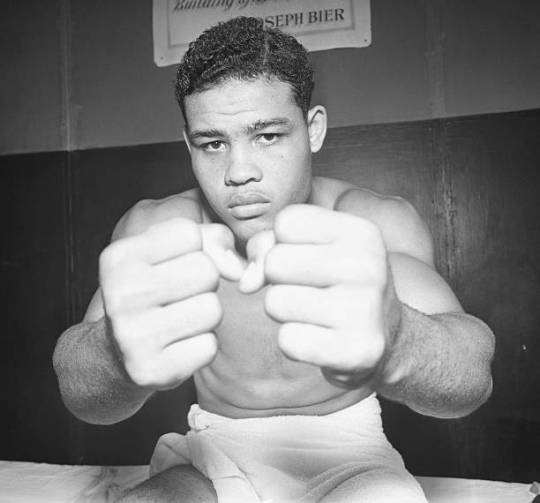

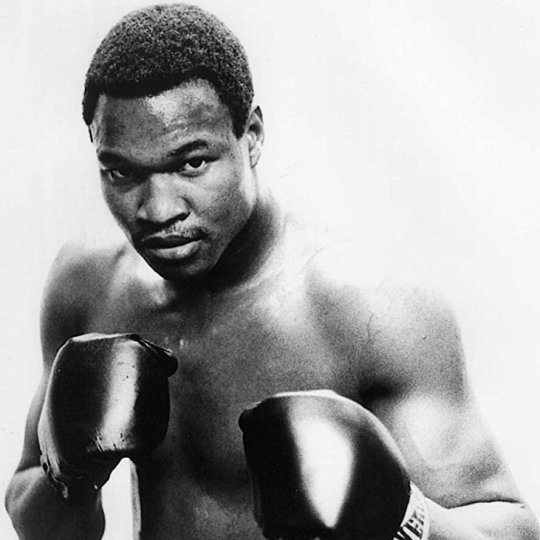
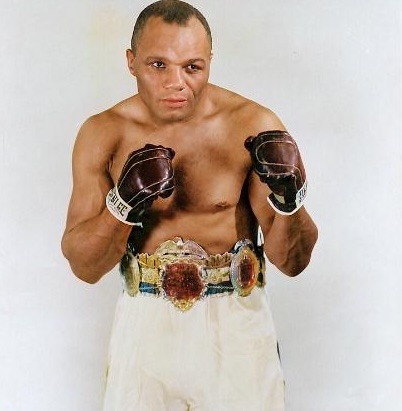
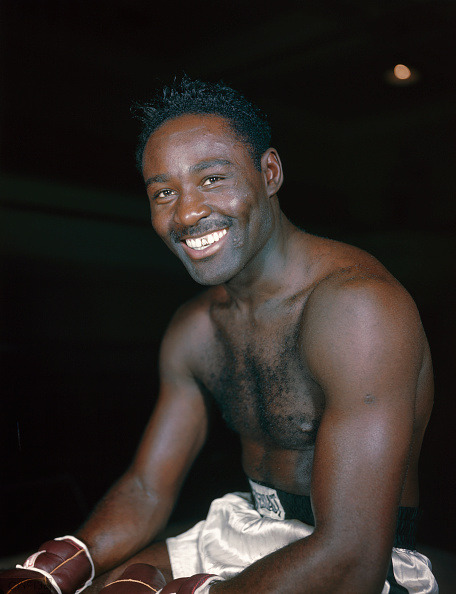


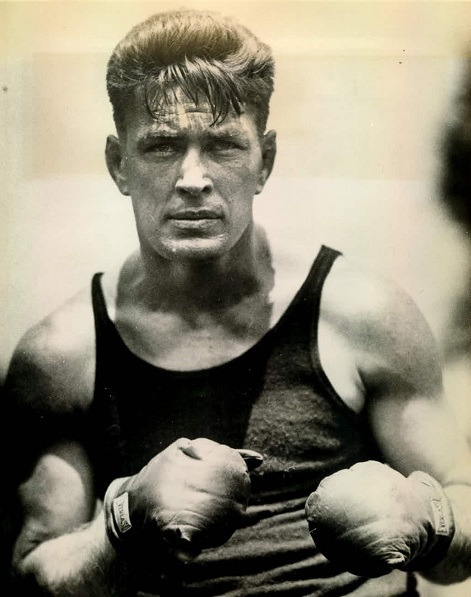

Heavyweight Icons
#max baer#joe louis#joe frazier#ezzard charles#jersey joe walcott#sonny liston#floyd patterson#larry holmes#jack dempsey#icons#boxing#sports#icon#heroes#hero#gene tunney
4 notes
·
View notes
Text

Muhammad Ali at Highland School, Las Vegas, November 4, 1965
Photos by Clinton Wright. Clinton Wright Photographs (PH-00379), UNLV Special Collections.
Ali spoke to kids at Highland School, 2277 N Highland Dr (MLK Blvd) while in Las Vegas training for his match with Floyd Patterson. The school was built in the early 50s, demolished in the early 00s, and replaced with Kermit R Booker Elementary School.
Photos: Muhammad Ali in Las Vegas, 1965




72 notes
·
View notes
Text

Floyd Patterson demonstrates the peek-a-boo defense, Chatham, New Jersey, Photo by George Silk, 1959
63 notes
·
View notes
Video
youtube
How Unstoppable Was Rocky Marciano?
#youtube#boxing#rocky marciano#muhammad ali#archie moore#angelo dundee#cus damato#mike tyson#george foreman#ray mancini#tommy morrison#floyd patterson#brawler#wladimir klitchko#teddy atlas
0 notes